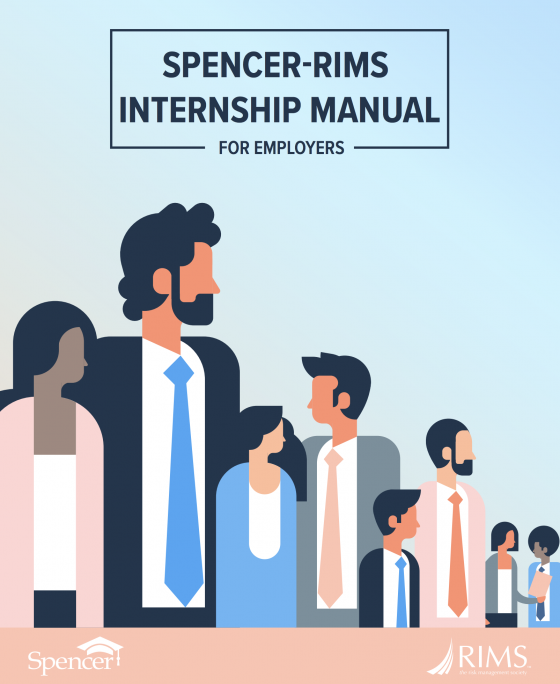Step-by-Step Guide Identifies Elements and Tools to
Develop a Successful Risk Management Internship
The newly released Spencer-RIMS Internship Manual for Employers offers a roadmap for risk professionals to design a valuable internship program for their organization while creating exciting and rewarding opportunities for future professionals.
Authored by RIMS Student Advisory Council, the manual includes:
- a justification worksheet for employers,
- strategies for designing an internship,
- a worksheet to define intern responsibilities, and
- potential activities and performance evaluation recommendations.
Additionally, the manual provides directions for risk professionals to apply for a Spencer Internship Grant to fund the program.
“Internships provide an unquestionable opportunity for organizations and their risk management teams to maximize capabilities and support business activities,” said RIMS CEO Mary Roth.
“Creating meaningful internships is crucial to the sustainability of this profession and we’re excited to build this bridge to rewarding risk management careers.”
“Insurance industry and risk management learning must extend beyond the classroom,” said Spencer Chairperson Marya Propis. “To complement the sensational curriculums that many colleges and universities now offer, real-world experience gives risk management and insurance students a competitive edge as they enter the workforce.
Through scholarships, grants and internship programs, Spencer continues to support new opportunities for students to explore our profession.”
To learn more about Spencer Internship Grant, visit www.spencered.org/professionals/internships.
The report is currently available exclusively to RIMS members. To download the report, visit RIMS Risk Knowledge library at www.RIMS.org/RiskKnowledge. For more information about the Society and to learn about other RIMS publications, educational opportunities, conferences and resources, visit www.RIMS.org.
About Spencer
Spencer was founded in 1979 and to this day remains the premier organization funding the education of tomorrow’s risk management and insurance leaders. Since its beginning, Spencer has awarded more than 1,050 scholarships totaling over $6.9 million, and $3.25 million in grants to universities and professional institutions for educational programs and conferences.
To learn more about Spencer, visit www.SpencerEd.org.

